Welcome to Card Game DB
Register now to gain access to all of our features. Once registered and logged in, you will be able to create topics, post replies to existing threads, give reputation to your fellow members, get your own private messenger, post status updates, manage your profile and so much more. If you already have an account, login here - otherwise create an account for free today!
Register now to gain access to all of our features. Once registered and logged in, you will be able to create topics, post replies to existing threads, give reputation to your fellow members, get your own private messenger, post status updates, manage your profile and so much more. If you already have an account, login here - otherwise create an account for free today!
Forging Your Fellowship 3: Like an Elf - Tending The Wounded
Jul 19 2012 05:00 AM |
sirprim
in Lord of the Rings
Forging Your Fellowship deckbuilding sirprim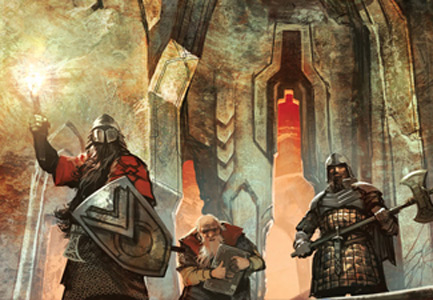 Forging Your Fellowship is a series about how I approach deckbuilding in LotR:LCG.
Forging Your Fellowship is a series about how I approach deckbuilding in LotR:LCG. I know that there are many ways to skin a cat (or Wargs (Core) for that matter) and I do not claim that my view are the end all be all way of deckbuilding. But maybe I can still get you to follow along and walk the path with me as I share my ideas.
Howdy readers,
after last weeks detour I can finally say that we are heading deeper into the realms of deckbuilding. We are no way near the 7th level yet, but getting closer nonetheless. Just as a quick recap, the current topics revolve around these three basic questions for building awesome decks:
1. How does my deck deal with locations?
2. How does my deck deal with enemies?
3. How does my deck deal with treacheries?
Ugh, not these again
But this time we step things up a bit and are going to explore a different approach.
So, the second possible answer to all three above questions is: soft-countering. (I bet many people have guessed something like that after article #2)
And the definition is also pretty close: Getting rid of certain cards by indirect means.
But this needs some further explanation. While hard-countering removes the card itself, soft-countering is removing all (or the most) relevant effects of certain cards from the game without getting rid of it.
(That's pretty straightforward and I guess many people are in the same boat here.)
Why, hello there, I am your deck and I'd like to ...
... soft-counter enemies
Alright, soft countering covers a much more broader variety of possible things you should look out for. Let's start from more to less obvious:
1. Cards like Forest Snare (Core) and Feint (Core) are able to remove most relevant aspects of an enemy from the game, either for a turn or for the (hopefully) whole game.
2. You assign a defender to a certain enemy for the rest of the game. If the encounter deck pests you with, say, Dol Guldur Orcs (Core) and you play a Silvan Tracker (TDM) just to defend against them over and over again, then these cards roughly counteract each other turn after turn and you have successfully soft-countered an enemy.
3. You could also soft-counter enemies effects via healing instead of defending. Imagine said Orcs go undefended, as long as you have some sort of Shadowcard control (or can bear the risk), a simple Daughter of the Nimrodel (Core) would soft-counter the orcs and stop them from having a relevant impact on the game.
4. You can also let enemies rot in the staging area and counteract their threat with willpower. In this example a Dol Guldur Beastmaster (Core) is sitting in the staging area. Let's assume you have relevant threat control, than a simple West Road Traveller (RtM) or Celebrian's Stone (Core) can be viewed as a soft-counter to said Beastmaster. They are likely only providing 2 threat during the game and you provided 2 extra willpower, problem solved.
5. And then there is also some very specific and situation dependant soft-countering, for example Radagast's Cunning (Core) completely removes the relevant part of Goblintown Scavengers (THFG) from the game. While they remain a 1ATK enemy afterward, you can consider that a successful soft-counter.
Of course all these things don't have to stop you from hard-countering enemies at an appropriate time later. Maybe this frees up some capacities to soft-counter some more
... soft-counter locations
When facing locations the soft-counter approach does not offer as much variety as vs enemies I fear. But still, this category includes weighing up the locations threat by willpower of your own. Let's say you don't want to travel to the Enchanted Stream (Core), because you fear the card disadvantage it brings (and rightly so). You can now play cards with 2 willpower (like Arwen Undomiel (TWitW)) and you again broke even with the Encounter deck. An only slightly different approach to soft-countering locations would be to directly render their threat useless with cards like Power in the Earth (Core) or Bombur (RtR). And while I dubbed this a direct approach, it doesn't remove the location from the game.
... soft-counter treacheries
soft-countering treacheries "just" includes methods of neutralizing the effects of treacheries rather than the card itself, but since those effects are so varying it is hard to give general advice here. Some examples have to do: The Galadhrim's Greeting (Core) almost counters Gollum's Anguish (RtM), Grim Resolve (Core) is golden after a Sleeping Sentry (RtR), a Warden of Healing (TLD) can remove the damage from The Necromancer's Reach (Core) given enough time and so on and so forth
But keep in mind that you don't have to soft-counter everything, you could just decide for example that you use this approach against locations and try to hard-counter enemies and treacheries. But both ways are also not one-dimensional, as you will most likely run a mixture of both anyway. But knowing the differences and when to do what and where the focus of your deck lies is valuable information during deck building in my opinion.
And it doesn't end here, in the near future I am going to highlight a 3rd way of answering my basic questions. So stay tuned.
So long,
Sebastian
P.S.: I hope that we could leave the "obvious"-land slightly behind us for now. Did you employ some soft-counter approaches in your decks so far? Let us know.
- Hastur360, CamelCity and Reager like this



 Sign In
Sign In Create Account
Create Account
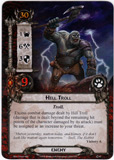
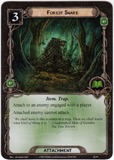
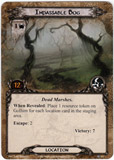
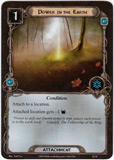
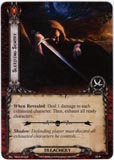
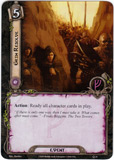











4 Comments
I've made deck building a bit harder on myself as I've reached a point where the cards in the deck have to make thematic sense to me. With Khazad-Dum and (nearly) 2 complete adventure pack cycles, there are a wide variety of cards available to make this possible.
This means that it's dwarves that journey through Khazad-Dum (eagles and horsemen in the mines don't make sense to me). I've finally ordered the Massing at Osgiliath; when it arrives I think a Rohan/Gondor alliance makes sense there. I realize these kind of self-imposed restrictions on deck building aren't for everyone. One of the main draws of this game for me is the narrative aspect, so now that we have enough cards to more fully realize themed decks that's the approach I've started to take.
The release of the Lore version of Aragorn, along with Elrohir and Elladan, inspired me to create a "Strider and the Sons of Elrond" deck. This makes sense to me-- after all, Elrond took Aragorn in and raised him along with his own sons-- so the idea of these 3 roaming around Middle Earth together seems right. This means my deck is Lore + Leadership + Tactics. Allies are Dunedain, Noldor or Silvan.
However, there are notable Spirit allies (Arwen Undomiel, Northern Tracker) that belong thematically, as well as Spirit events you can't do without (Hasty Stroke, Test of Will). So I have to rely on Song of Travel and Celebrian's Stone to gain the Spirit resource icon (Rivendell Minstrel helps out here).
Net result is a deck that is slow to develop (not setting scoring records) but overall performs well and makes narrative sense to me.